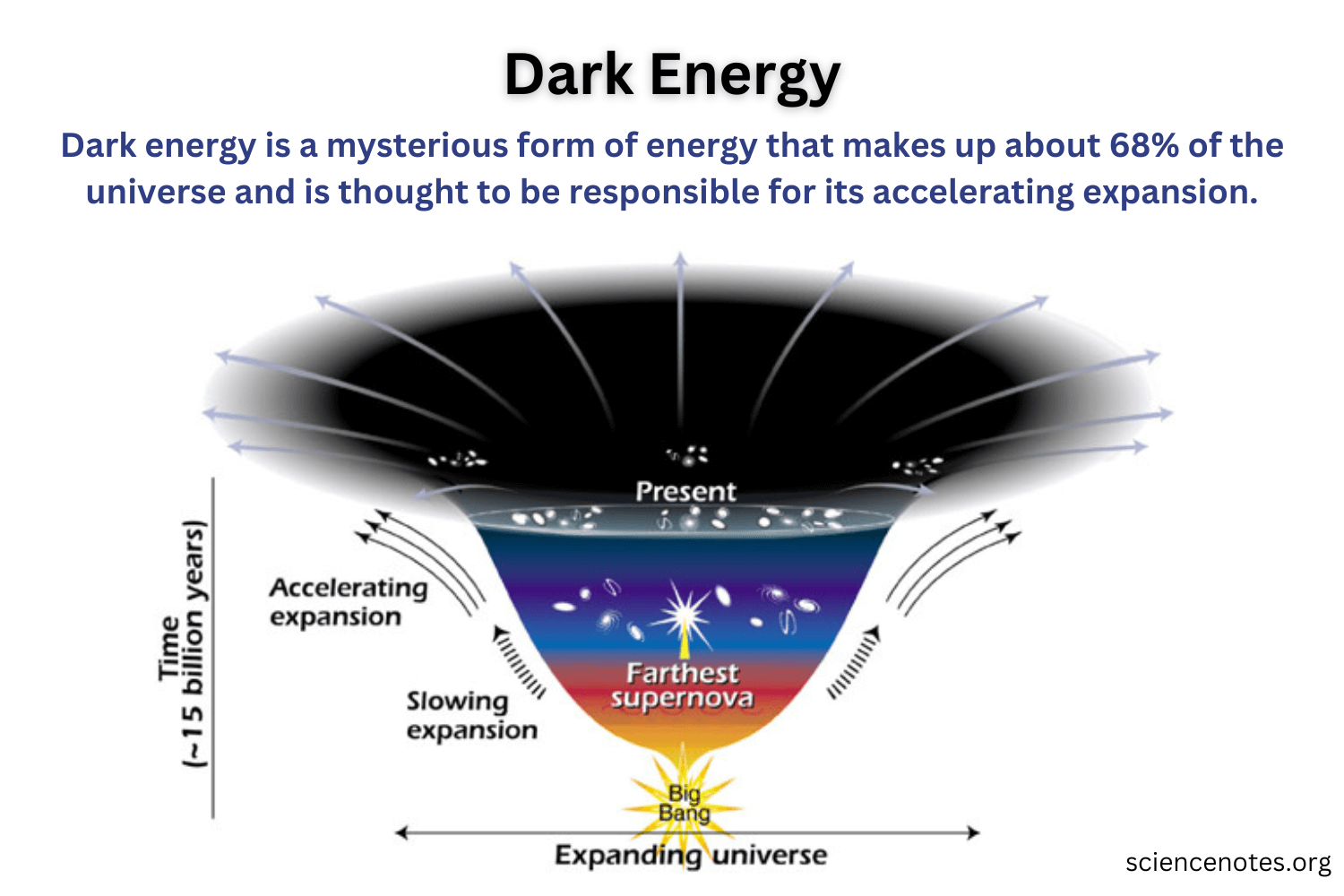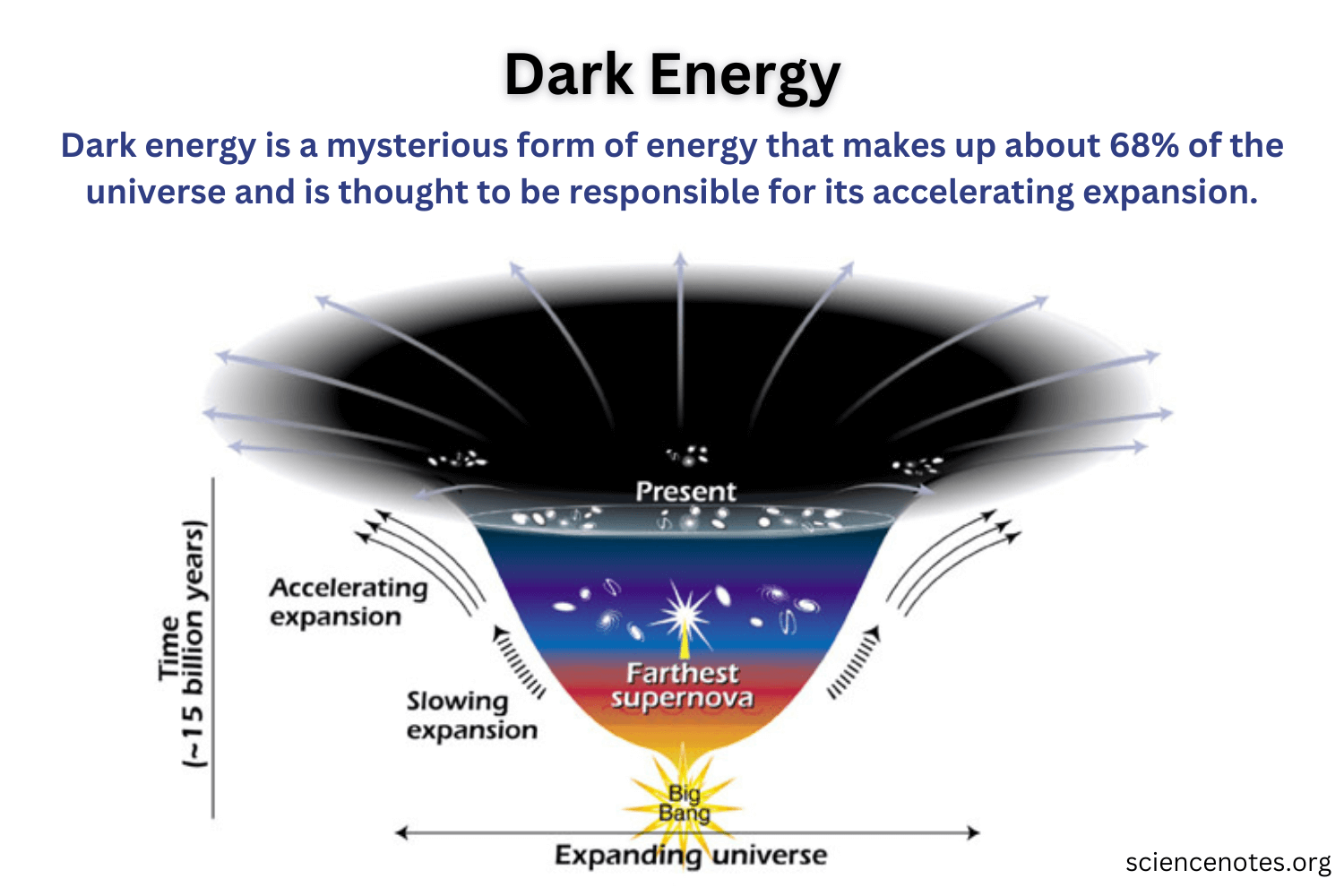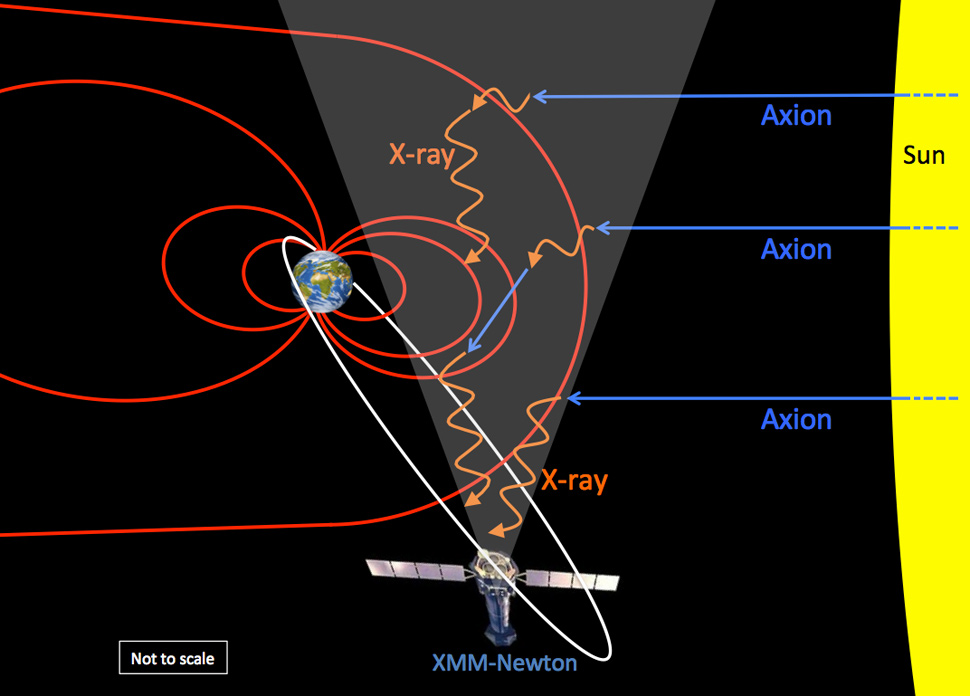
Dark Energy Insights from DESI Collaboration Research
Dark energy has emerged as one of the most intriguing concepts in modern astrophysics, posing fundamental questions about the fate and evolution of our universe. This enigmatic force, often described as a “cosmological constant,” is thought to be responsible for the universe’s accelerating expansion, challenging our current understanding of physics. Recent dark energy research, particularly from the DESI collaboration, has indicated that this force might be weakening over time, necessitating a reassessment of existing theories. By analyzing a vast dataset from over 14 million galaxies, scientists are gaining insight into how dark energy has shaped the cosmos over the last 11 billion years. Understanding dark energy is crucial not only for unraveling the mystery of cosmic expansion but also for exploring galaxy evolution and the very fabric of the universe itself.
In the realm of cosmology, dark energy represents a mysterious and pivotal force that significantly influences the dynamics of the universe. Commonly referred to in scientific discussions as energy density, this component is integral to our comprehension of cosmic acceleration and the large-scale structure of the universe. Studies conducted in collaboration, such as those by the DESI team, continually probe these cosmic phenomena to achieve deeper insights. Within these studies, the role of this elusive energy in the orchestration of galaxy formation and the evolution of the universe’s vast web is meticulously examined. As new discoveries emerge from collaborative efforts, researchers are re-evaluating how we perceive the cosmos and its underlying principles.
Understanding Dark Energy: A Key to the Universe’s Future
Dark energy remains one of the most enigmatic concepts in modern cosmology. It is widely thought to act as a ‘cosmological constant,’ exerting a repulsive force that drives the universe’s accelerated expansion. Researchers are actively debating whether dark energy is truly constant or if it evolves over time. With the latest findings from the Dark Energy Spectroscopic Instrument (DESI) collaboration, scientists have presented compelling data suggesting that dark energy may indeed be changing. This paradigm shift in understanding could have profound implications for our interpretation of cosmic evolution and the ultimate fate of the universe.
The DESI’s central role in examining dark energy sheds light on how it interacts with matter throughout the universe. By creating the most extensive 3D cosmic map, scientists aim to unravel the complexities of galaxy formation and the dynamics of the universe’s expansion. The observational evidence, particularly Baryon Acoustic Oscillations, provides researchers with a crucial standard ruler to measure the universe’s growth and the variability of dark energy across billions of years. This ongoing research not only enhances our grasp of dark energy but also invites questions about how we might reconcile discrepancies between theoretical models and observational data.
The DESI Collaboration: Expanding Our Cosmic Knowledge
The Dark Energy Spectroscopic Instrument (DESI) collaboration has brought together over 900 scientists from more than 70 institutions around the globe, dedicated to deciphering the mystery of dark energy and its implications for cosmic structure. This vast project, overseen by the U.S. Department of Energy’s Berkeley Lab, showcases the power of international collaboration in advancing our understanding of the universe. Notably, key contributors, such as Professor Daniel Eisenstein from the Center for Astrophysics at Harvard & Smithsonian, have played pivotal roles in driving innovative research methodologies that enhance data collection and interpretation, ultimately contributing to significant discoveries in astrophysics.
As DESI continues to collect data every clear night, it is not just a quest to understand dark energy but also a broader investigation of galaxy evolution, the cosmic web, and the Milky Way’s structure. This multifaceted approach underscores the importance of interdisciplinary research in astronomy. By aligning the goals of dark energy studies with inquiries into the evolution of galaxies, DESI is paving the way for a new era of astronomical research that has the potential to reshape our understanding of the cosmos.
The Role of Galaxy Evolution in Dark Energy Research
Galaxy evolution is intricately linked to the dynamics of dark energy, forming an essential aspect of cosmological studies. As galaxies develop, they interact with dark energy, influencing their formation and distribution across the universe. The findings from the DESI collaboration indicate that as the universe expands, the structure of galaxies can be affected by the changing parameters of dark energy. Understanding this relationship is crucial as it could help delineate how dark energy influences cosmic structures and their evolution over time.
Through extensive analysis of over 14 million galaxies and quasars, researchers have been gathering insights into the impacts of dark energy on galaxy dynamics. The interplay between matter and dark energy not only shapes the universe’s expansion but also dictates the life cycle of galaxies. By integrating knowledge from various domains, including galaxy evolution and cosmological constants, researchers can elucidate the complexities of the cosmos and predict future trends in the evolutionary path of galaxies in relation to dark energy.
Cosmological Constants and Their Implications
The concept of the cosmological constant has fascinated scientists since its inception, with dark energy being one of its most discussed manifestations. In recent studies, including those conducted by the DESI collaboration, there’s a growing consensus that the cosmological constant may not hold the same value indefinitely. This evolving understanding prompts researchers to rethink fundamental theories about the universe’s expansion and its future trajectory. By reassessing the cosmological constant, scientists open up new avenues for theoretical exploration that could redefine our grasp of physics.
Previous assumptions about a static cosmological constant are being challenged as data from DESI suggests potential variations. Such changes could redefine how astronomers interpret cosmic data and develop models governing the universe’s behavior. By engaging with observations that reveal anomalies in the expected steady-state of dark energy, scientists are moving toward a more nuanced understanding of cosmological constants, which may lead to groundbreaking theories about the ultimate fate of the universe.
The Future of the Universe: Dark Energy’s Role
Understanding dark energy is pivotal for forecasting the universe’s future. As DESI continuously maps the cosmos and gathers critical data on dark energy, scientists are piecing together how this mysterious force impacts the universe’s continuous expansion. The notion that dark energy could be weakening over time invites speculation about the long-term evolution of galaxies and cosmic structures. This uncertainty in dark energy’s behavior could affect predictions about whether the universe will continue expanding indefinitely or reach a potential collapse.
Key to these predictions is how dark energy plays a role in balancing gravitational forces. As more galaxies and quasars are observed through DESI, the implications of these observations on dark energy will become clearer. This research not only enhances our understanding of cosmic dynamics but also seeks to offer insights into the potential scenarios for the universe’s fate, whether it be a continued expansion, a steady state, or a big crunch.
Baryon Acoustic Oscillations: Measuring Cosmic Evolution
Baryon Acoustic Oscillations (BAOs) provide crucial insights into the distribution of matter throughout the universe. In the context of dark energy research, BAOs serve as a standard ruler, enabling scientists to measure cosmic distances accurately. As DESI utilizes this method to analyze 14 million galaxies and quasars, researchers can track the influence of dark energy over billions of years, offering a historical perspective on cosmic expansion. This data is crucial for understanding how dark energy has shaped the universe’s evolution.
By examining the imprints left by BAOs in the large-scale structure of the universe, researchers can infer how dark energy has acted throughout cosmic history. These measurements not only offer a glimpse into the universe’s past but also allow scientists to predict potentially transformative changes in the future. The ongoing study of BAOs through projects like DESI is foundational for addressing the broader questions surrounding dark energy and its effects on the distribution and evolution of galaxies.
The Impact of International Collaboration in Astrophysics
International collaboration has become a cornerstone of modern astrophysical research, particularly in expansive projects like the DESI initiative. With contributions from over 900 researchers worldwide, this collaboration harnesses diverse expertise and resources, driving forward the exploration of dark energy and its implications for the universe. Such extensive cooperation enhances the quality of scientific research, facilitating more robust data analysis and innovative methodologies that may not be possible within isolated group efforts.
The DESI collaboration exemplifies how pooling knowledge can accelerate scientific breakthroughs in dark energy research. Researchers leverage each other’s strengths, sharing data and insights that significantly enrich collective efforts to explore cosmic phenomena. This emphasis on cooperation underlines the importance of a global perspective in tackling complex scientific questions that impact our understanding of the universe and the evolution of galaxies amidst this ever-expanding cosmic landscape.
Public Engagement and Education in Astrophysics Research
Public engagement plays a vital role in advancing astrophysical research, especially in initiatives like DESI. With a dedicated outreach committee led by researchers such as Claire Lamman, the collaboration emphasizes making complex scientific findings accessible to a broader audience. By developing visual materials and educational resources, the DESI team aims to foster interest in cosmological studies, enabling the public to appreciate the nuances of dark energy and its implications for our understanding of the universe.
Educational outreach not only enhances public understanding but also inspires the next generation of scientists to pursue careers in astrophysics. By highlighting the importance of dark energy research and its connection to galaxy evolution, the DESI collaboration aims to build awareness about the universe’s mysteries. Engaging storytelling and visual presentations make this complex science relatable, ensuring that the groundbreaking discoveries made by DESI resonate far beyond the scientific community and into the wider world.
Exploring the Cosmic Web with DESI Data
The study of the cosmic web, the large-scale structure of the universe formed by galaxies and dark matter, has seen significant advancements due to data collected by the DESI project. This extensive survey not only enhances our understanding of dark energy’s role in shaping galaxy distribution but also provides insights into how the cosmic web evolves over time. Researchers are able to uncover patterns in matter distribution that reveal the underlying forces at play, including the effects of dark energy.
Through meticulous mapping of the cosmic web, scientists are poised to explore how dark energy affects the growth and interaction of cosmic structures. The integration of data over vast scales allows for a more comprehensive understanding of how galaxies evolve under the influence of dark energy and the gravitational effects of dark matter. As DESI continues to chart the cosmos, the exploration of the cosmic web offers a critical lens through which researchers can evaluate the dynamics of the universe’s expansion and the ever-persistent mystery surrounding dark energy.
Frequently Asked Questions
What is dark energy and how does it relate to the universe’s expansion?
Dark energy is a mysterious force that is believed to be driving the accelerated expansion of the universe. It is often associated with the cosmological constant introduced by Einstein in his theories. Recent research, particularly from the Dark Energy Spectroscopic Instrument (DESI) collaboration, suggests that dark energy may be evolving over time, which could challenge our understanding of cosmological principles.
How is dark energy being studied by the DESI collaboration?
The Dark Energy Spectroscopic Instrument (DESI) collaboration is analyzing how dark energy influences the distribution of matter across the universe. By creating the largest 3D map of the cosmos, DESI tracks the behavior of dark energy over the last 11 billion years through observations of over 14 million galaxies and quasars.
What are the implications of the findings from dark energy research regarding the cosmological constant?
The findings from dark energy research indicate that the cosmological constant, which represents dark energy in Einstein’s equations, may not be constant after all. The evidence gathered by the DESI collaboration implies that dark energy’s influence might be changing, necessitating a re-evaluation of the current cosmological models.
How does dark energy affect galaxy evolution according to recent studies?
Recent studies examine how dark energy plays a critical role in galaxy evolution by influencing the rate of cosmic expansion. As seen in the findings from DESI, the effects of dark energy might be altering how galaxies form and evolve in the ever-expanding universe, suggesting that its properties could impact galactic structures.
What are Baryon Acoustic Oscillations and their significance in dark energy research?
Baryon Acoustic Oscillations (BAO) are patterns in the distribution of matter in the universe, caused by sound waves in the early cosmos. These oscillations serve as a cosmic ‘ruler’ that helps researchers in the DESI collaboration measure the influence of dark energy throughout the universe’s history, providing crucial insights into the dynamics of cosmic expansion.
How accessible is the data from dark energy research conducted by DESI?
The DESI collaboration has made its Data Release 1 publicly accessible, allowing anyone to explore detailed information about millions of celestial objects. This data facilitates ongoing astrophysical research, from dark energy studies to galaxy evolution, providing a valuable resource for both professionals and enthusiasts in the field.
What role does the Center for Astrophysics | Harvard & Smithsonian play in dark energy research?
The Center for Astrophysics | Harvard & Smithsonian is a key contributor to dark energy research through its involvement in the DESI collaboration. Researchers from CfA, including leading scientists like Professor Daniel Eisenstein, contribute to the analysis, development of algorithms, and public outreach efforts, significantly enhancing our understanding of dark energy and its effects on the universe.
| Key Points |
|---|
| New findings suggest dark energy may be weakening over time, challenging the standard model of the universe’s expansion. |
| Dark energy is crucial for understanding the universe’s accelerating expansion and is balanced by matter. |
| The Dark Energy Spectroscopic Instrument (DESI) provided a 3D map of the universe, assessing dark energy’s impact over 11 billion years. |
| Results derived from the analysis of 14 million galaxies and quasars indicate a changing nature of dark energy. |
| The research was significantly contributed by Harvard’s CfA and involved numerous international collaborators from over 70 institutions. |
| The DESI collaboration has released public access to its first dataset, enabling further astrophysical research. |
| Ongoing DESI surveys continue to enhance our understanding of galaxy evolution and cosmic structure. |
Summary
Dark energy plays a pivotal role in the understanding of our universe and its expansion. Recent discoveries indicate that dark energy may not be a constant force but could be weakening, prompting a reevaluation of cosmological models. As researchers harness data from the Dark Energy Spectroscopic Instrument (DESI), the implications of these findings are substantial, suggesting that dark energy’s impact may be changing in complex ways that could reshape our understanding of cosmic evolution.



